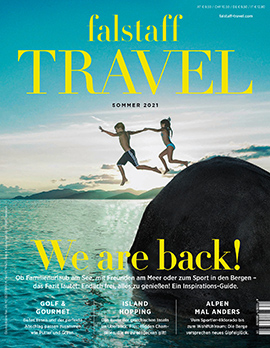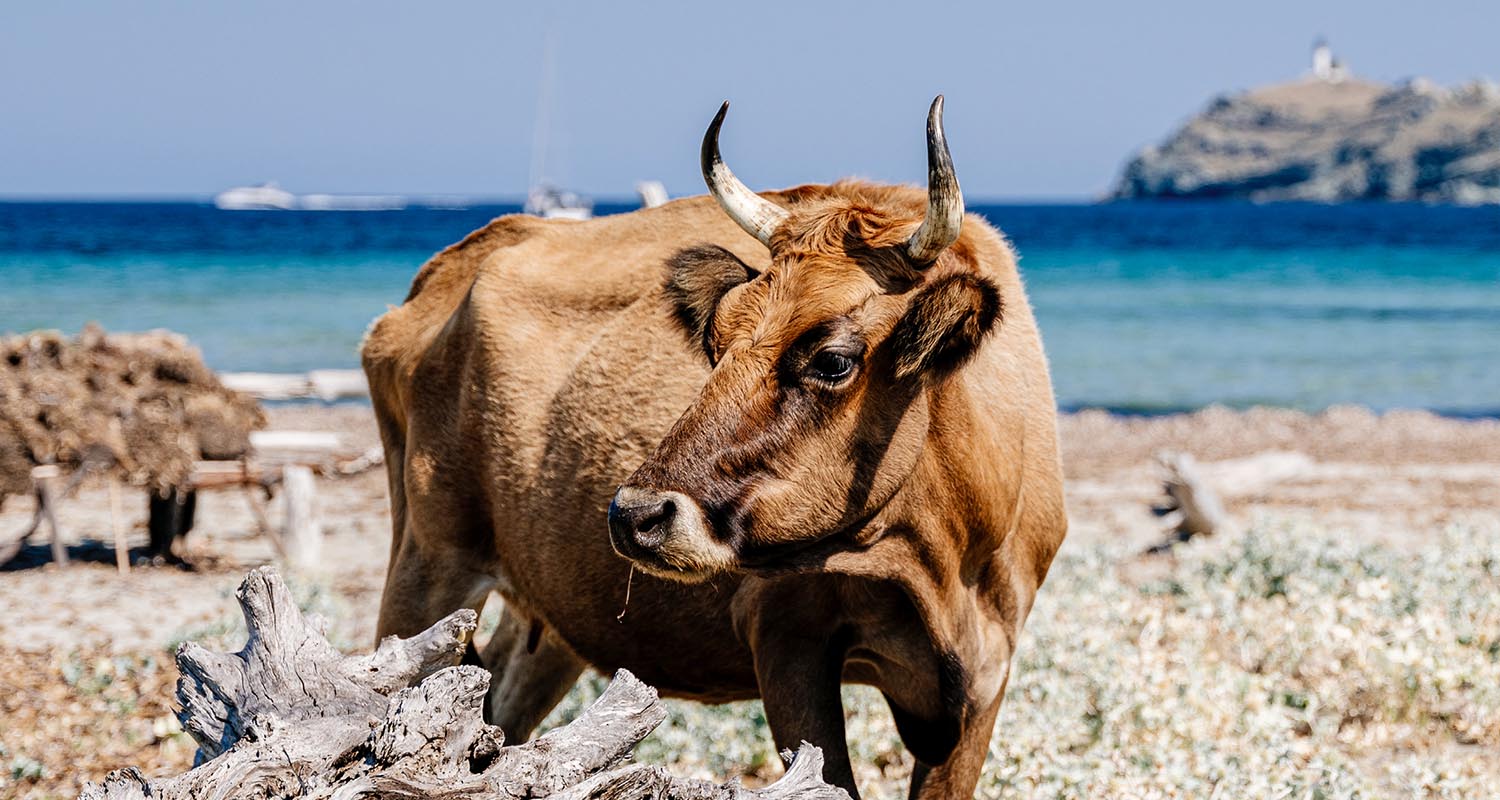
Corsica: a kaleidoscope of European landscapes
Where defiant mountain farmers meet suave hoteliers and humble fishermen meet surprised guests....
22 July 2021
Sometimes Scotland, then again Sardinia and in between again and again French Riviera: The Mediterranean island of Corsica is a kaleidoscope of European landscapes and a melting pot of cultures. Here, defiant mountain farmers meet suave hoteliers and humble fishermen meet surprised guests.
Diverse and unique
It is neither sexy nor glamorous: Corsica, the fourth largest Mediterranean island, has few attributes that its "colleagues" Sardinia and Mallorca claim for themselves and which make them so attractive for many guests. And yet: Who travels here once, comes again and again. This is not only said by a Corsican proverb, but also attested by reality.
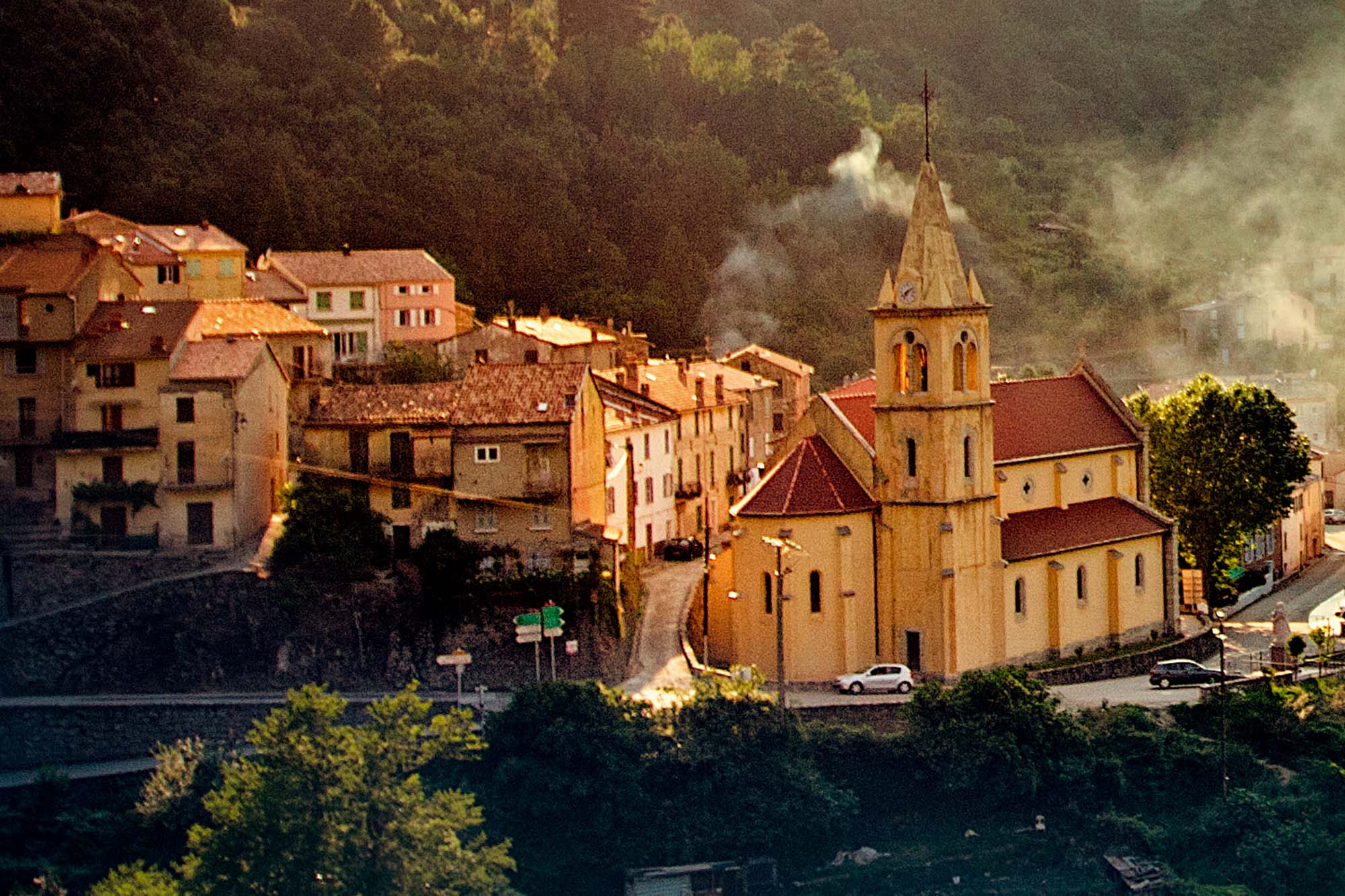
Lonely bays meet wild high valleys, lush vegetation meets bare slopes, vibrant cities by the sea meet extinct nests in the mountains. Corsica is all of this. Some come to hike, many families to camp, others sail from one secluded bay to the next and still others come as explorers - to an island that still has many unexpected surprises to offer in 2021.
Loved and lived
This is probably also due to the history of the island. Its name, which according to popular opinion goes back to the Phoenicians, means something like "covered with forests" and says a lot about the nature of the island, which today belongs to France, but has always retained its idiosyncrasies - in European as well as in French history. This includes the fact that the Corsicans proclaimed their independence from Genoa in 1755 and subsequently became the first democracy of modern times - far ahead of France, to which Corsica has belonged, with a short interruption since 1769 and which to this day does not enjoy any particular popularity among the inhabitants.

For many years, the uncertain situation kept tourists from flocking to the island, and it wasn't until the late 1990s that guests started trickling in. Today, Corsica is trying to catch up, but it is precisely the omission of recent years that makes the special charm. Here mass tourism is a foreign word, "Balearisation" a term that people are familiar with - and a status that is vehemently opposed.
Hiking and mountaineering
At the end of the 1990s, mainly campers were attracted to the island, whose places still dominate many beautiful beaches to this day and shape the ambience of the island - they and sportsmen. The latter group gets its money's worth in the mountainous inland; then, as tourist expedition members, as well as today, where hiking is suddenly mainstream and a lifestyle concept. In principle, little has changed inland. The villages are still as deserted as ever, in the lazy midday sun you drink pastis with the old people at the marketplace as you probably did 100 years ago; the pine forests smell beguiling and the wild boars accompanying you at every turn.
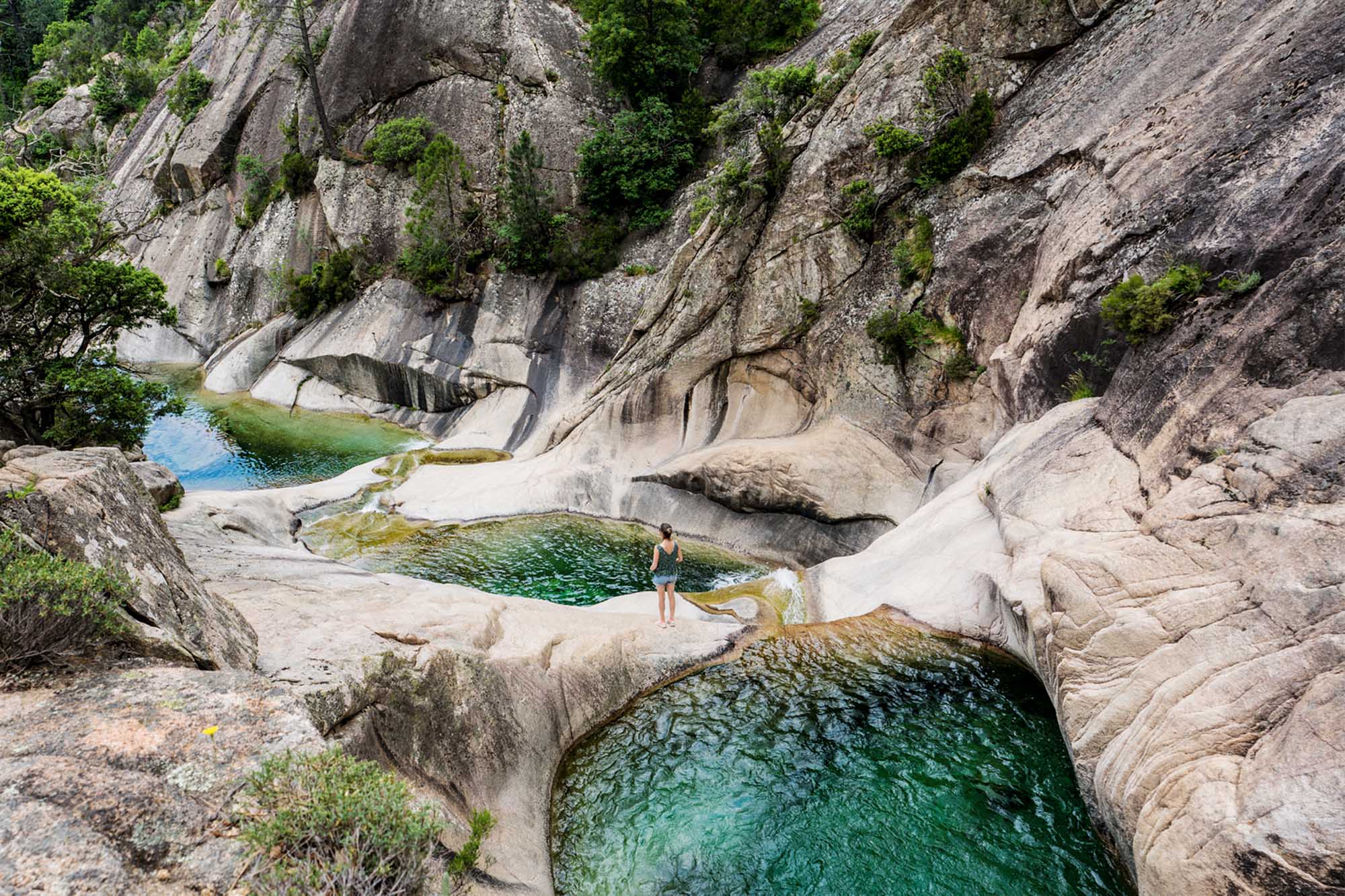
This is also meant quite literally: Some hikers have been lucky and were led by one of the boars through impassable terrain, others were less lucky and had to pause for hours on a country road, because the little animals were sunbathing there at that very moment. Live and let live! In Corsica, the clock ticks differently, everything runs much more leisurely than on the French mainland or the other Mediterranean islands. Fancy beach clubs à la "Club 55" or "Nikki Beach" are just as rare here as luxurious shopping miles, but there is a lot of breathtaking nature. Nevertheless, some yachts from nearby Sardinia stray here and anchor in the natural harbour of Bonifacio, which is spectacular per se. For yachtsmen it may be the first stop on the island, for many others one of the last.
An island timetable
In order to get to know the island and its diversity only rudimentarily, one should plan at least two weeks and many stopovers. First of all, it is advisable to drive to the north of the island, the Cap Corse, and from there to the charming holiday resort Saint-Florent. It is the centre of the Nebbio region, a fertile area between Cap Corse and the Désert des Agriates, with its unspoilt beaches that are ideal for long kayak trips. Corsica's best-known wine-growing area - the Patrimonio - is also located here, and those who prefer pleasure to activity can enjoy plenty of exciting wines here to start their onward journey invigorated.
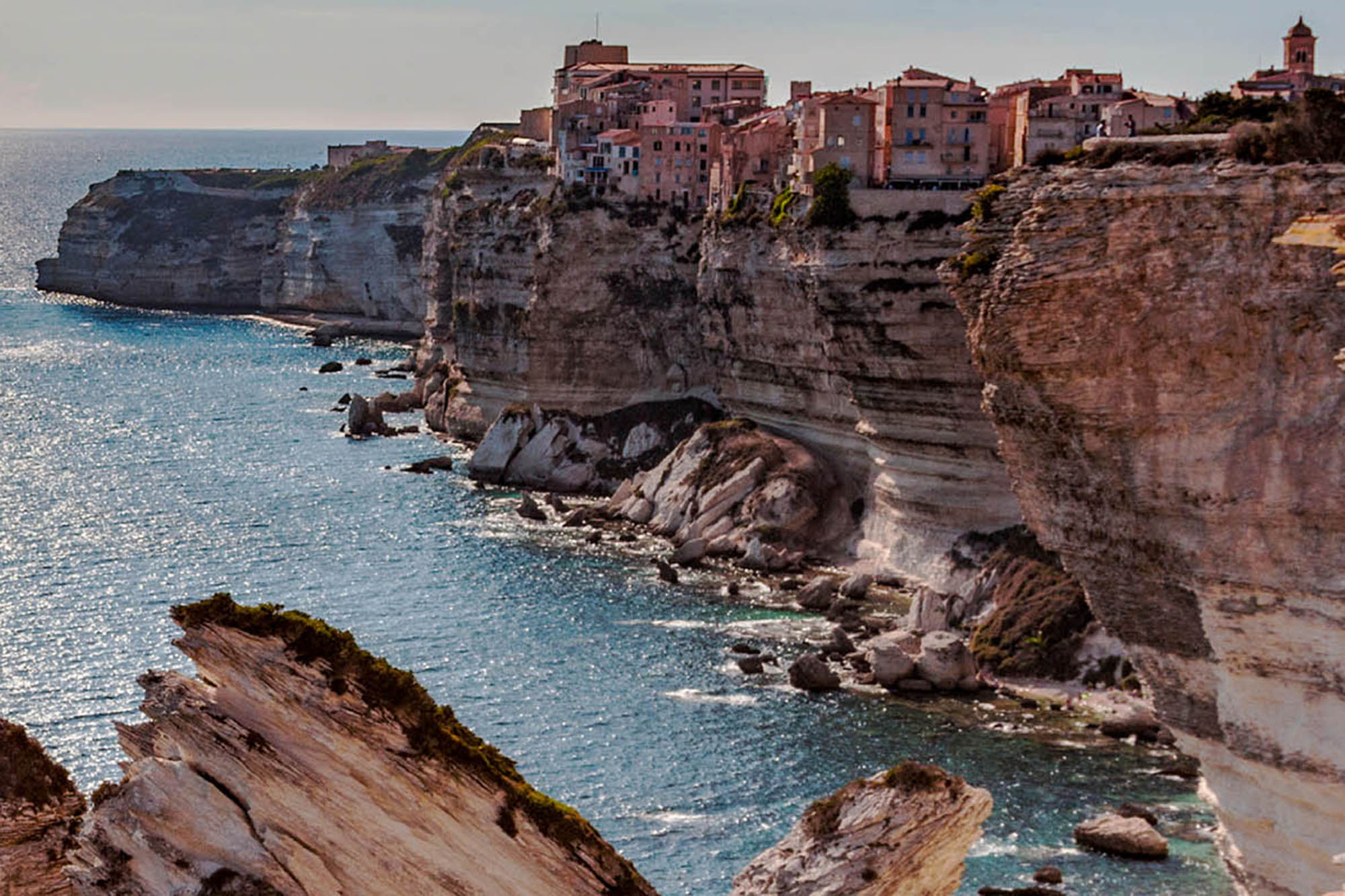
From there, the journey continues into the Balagne region, also known as the "Garden of Corsica", the epicentre of which is the small town of Calvi - particularly noteworthy for its charm. However, as soon as you leave Calvi behind and take the road to Porto, you get a taste of wild, original Corsica: the mountain roads become narrow, the slopes steep, and it is hard to imagine that the Tour de Corse, the French round of the World Rally Championship, is taking place here while you are moving forward at walking pace. Once in Porto, you can decide whether to continue along the coastal road over the Calanches towards the capital, Ajaccio, or head inland via the villages of Ota and Evisa, which still bear their old Italian names, towards Corte, the old capital.
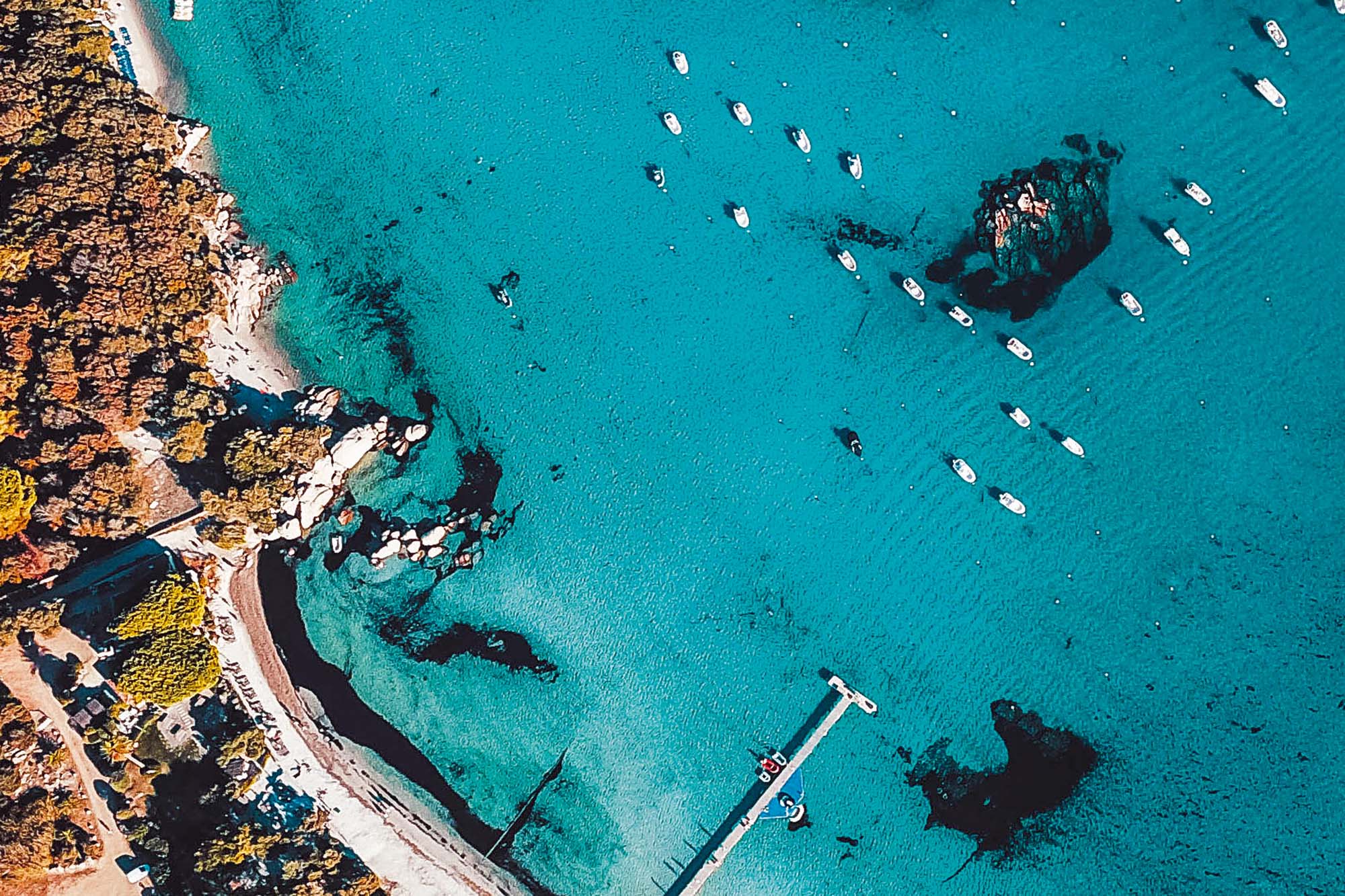
Porto itself, the main town of the Gulf of Porto, is also not stingy with its charm. A picturesque Genoese tower is perched on a red rock in front of the sea, and a bathing beach spreads out behind it, with pebbles of all colors glittering on the shore. In general: these colours! The red granite rocks drop steeply and so pompously into the azure blue sea that one can hardly get enough of this beauty. If you choose the route to Corte and from there towards the south, the landscape changes quickly: majestic pine forests and venerable chestnut trees line the way. Then the mountains become more rugged and higher. At some point you even cross a pass, which is quite surprising in its alpine character. It is worthwhile to stop and take the road into small valleys. The famous Gumpen, natural stream pools, tempt you to jump into the cool water all along the route.
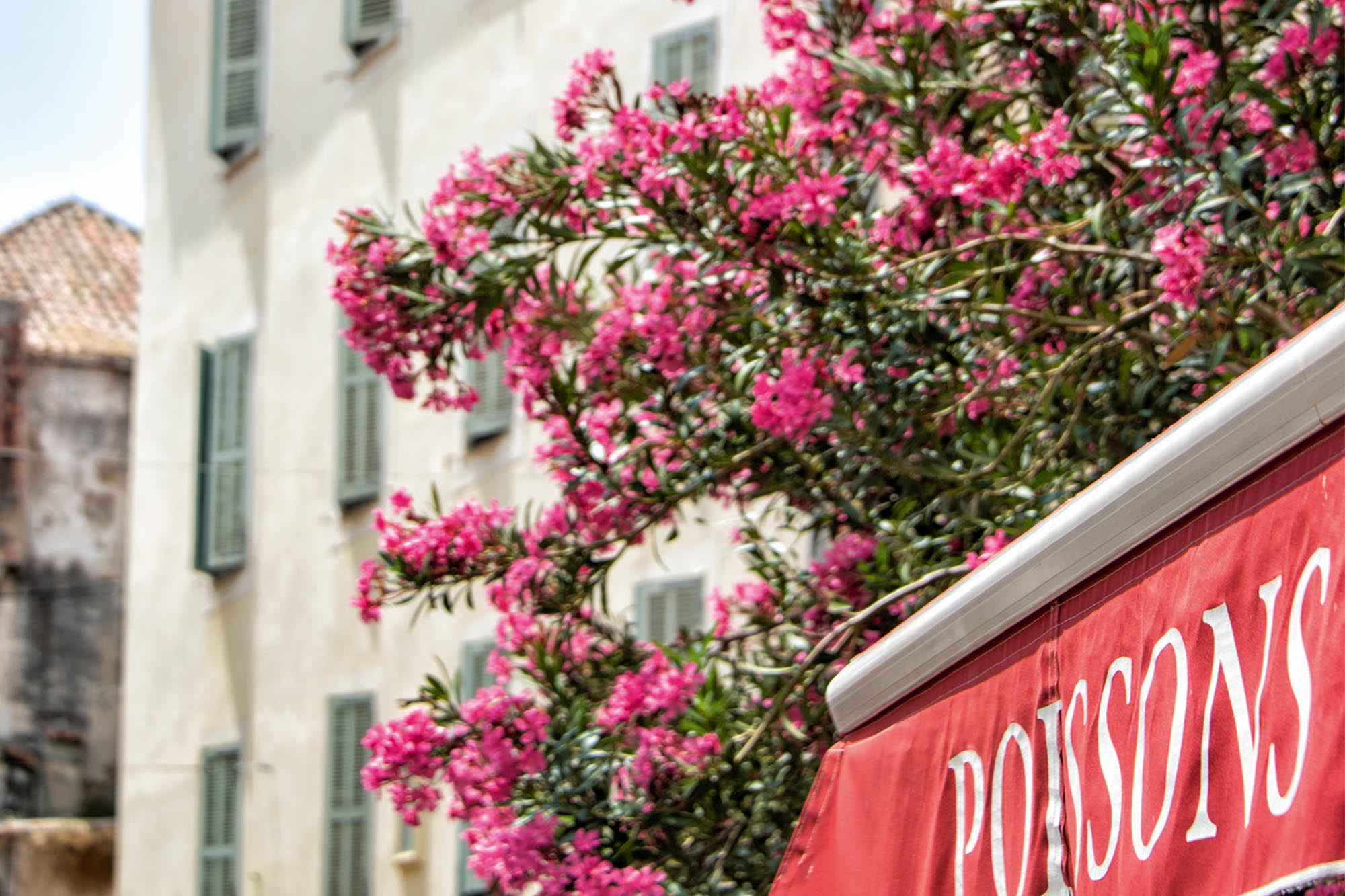
Particularly popular is the wild and romantic Restonica Valley, a special highlight of Corsica that should not be missed. If that is the case: No big deal, Corsica surprises you with a new natural spectacle after every fork in the road. There is only one thing that definitely should not be missed: Bonifacio!
Destination: Heaven on Earth
From the small town of Porto-Vecchio onwards, picturesque bays with inviting hotels predominate. There you can enjoy the Caribbean-like sea in peace, and it is not far to Bonifacio; a city that should be at the top of every travel lover's list. Situated on a peninsular rocky plateau, Bonifacio's old town is indeed one of the most impressive in the Mediterranean. The houses steeply drop into the cliffs, and if you can get a restaurant seat with a view, you should definitely be free from giddiness. To get to the old town, whose narrow, cobbled streets are lined with four- to five-storey houses, you have to climb up a drawbridge and a zigzagging path to the citadel.
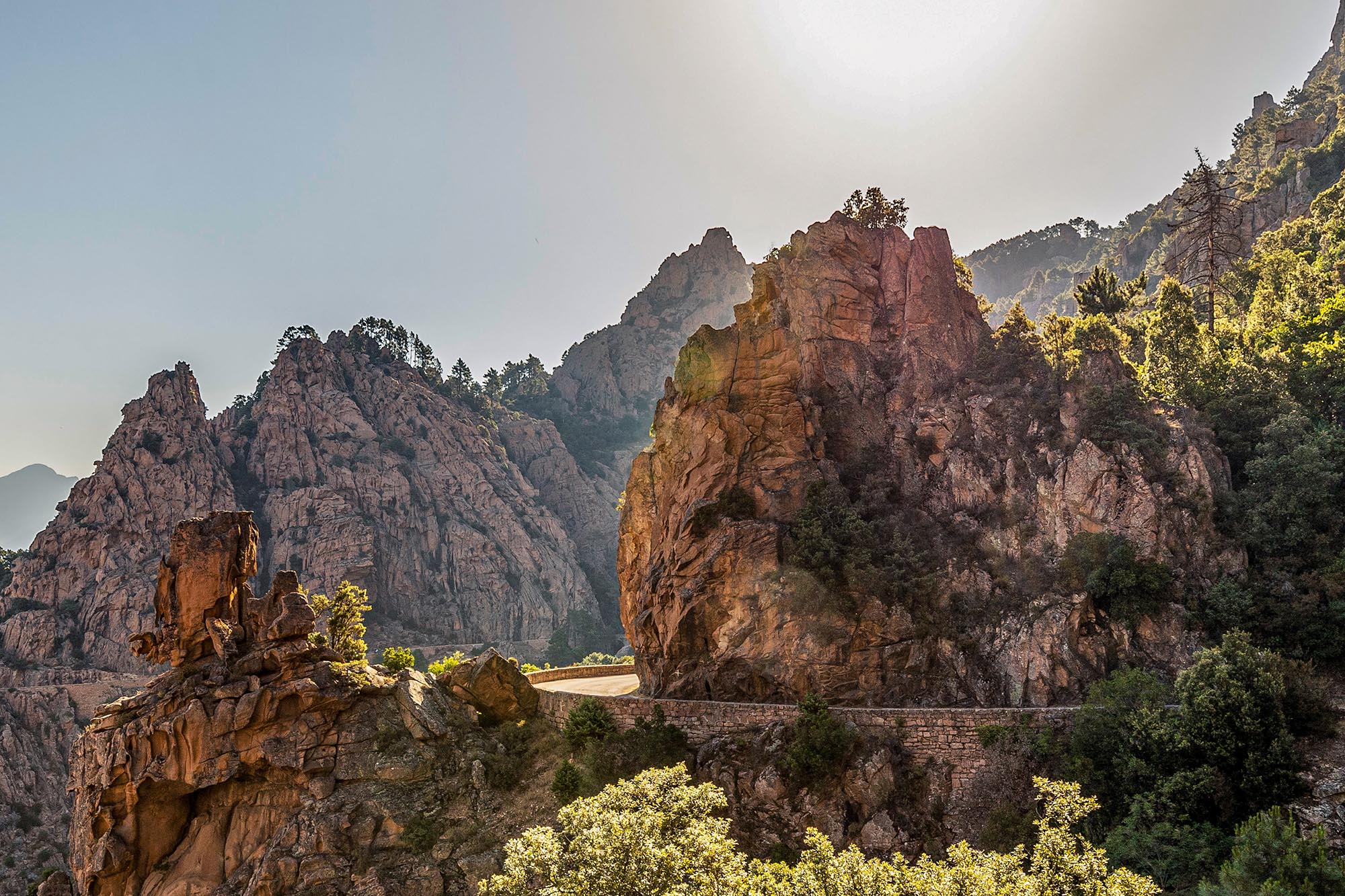
Credit: mauritius images / Alamy / Didier ZYLBERYNG, Getty Images Illustration: Stefanie Hilgarth, Getty Images, mauritius images / Birgit Nitzsche
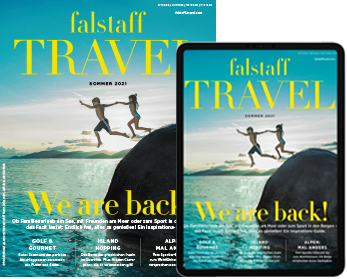
This article appeared in the Falstaff TRAVEL issue Summer 2021.
